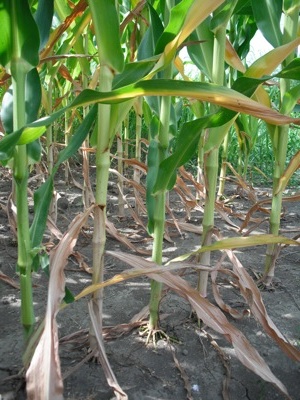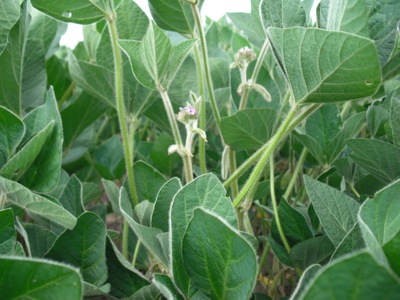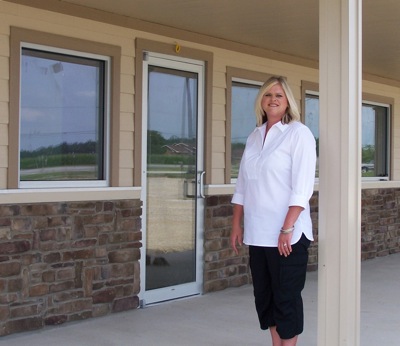Wednesday, August 12th, 2009
Local crops struggle due to weather issues
First wet, then cold and now too dry
By Nancy Allen

Photo by Nancy Allen/The Daily Standard
These corn plants at the intersection of Meyer and Monroe roads south of Celina are starting to fire at the bottom due to lack of moisture. Firing is when the leaves curl and turn brown.
Late planting due to a wet spring, unseasonably cool weather and a lack of rainfall are combining to put a triple whammy on local crops.
Rain has been in short supply lately and the crops are showing it, local ag officials say. Also, July broke a 25-year-old record for low temperatures, which continued until last weekend when the temperature soared to almost 90.
"Corn is showing extreme stress as well as soybeans," said John Smith of the Auglaize County OSU Extension. "Right now we are losing production every day in this area, both corn and soybeans."
Smith said crops are at a critical stage, particularly corn. Crops in the southern part of the county are worse off than other parts that received more rain. Some areas that have received adequate rain look good.
Lack of rain is the bigger issue, Smith said, but cooler temperatures also have slowed corn and soybean development, meaning ears and soybean pods aren't filling out like they should.
But the cooler weather has been a blessing in a way.
"If the area had experienced 90 degree weather with the same amount of rainfall, the crops would be in worse shape than they are now," Smith said. "Hot weather without moisture is going to damage it that much more."
In Mercer County the situation seems about the same.
Some of the county's corn is starting to fire, meaning the bottom leaves are curling and turning brown from lack of rain, said Jim Hoorman, OSU Extension educator for Mercer County.
Hoorman agreed with Smith saying the cooler weather actually helped keep the crops from experiencing as much stress as they would have if temperatures had been warmer.
"If we had warmer temperatures, the corn would really be curling up," he said.
Hoorman said he would not call the situation in Mercer County critical, but rather said crops are "holding their own."
"What I call critical is when the plants are really starting to fire and see stress," he said. "We are just starting to see that ... when you don't get moisture, you can't get nutrients to flow through the plant."
A small area in the extreme southwest part of the county and a very small area of the southeast portion looks better because they received more rain. Some areas around Burkettsville also got a bit more rain, said Mercer County Farm Service Agency technician Mike Baucher.
The delays caused by late planting, cooler temperatures and dry weather could delay harvest as well.
Whether this combination of factors will result in reduced yields is still a question mark, Hoorman said.
Statewide, ag officials are seeing tremendous variation in crops, said Peter Thomison, an OSU Extension agronomist.
"Those areas in the state that have been getting rain, combined with moderate temperatures, have ideal growing conditions for corn," Thomison said.
Jim Beuerlein, an OSU Extension soybean agronomist, said the state's soybean crop overall looks good, but how good yields are will depend on what Mother Nature has in store this month and September.
Beuerlein said recent cooler temperatures have slowed the growth rate of the state's soybean crop, but that shouldn't impact yields.
For the latest crop updates, refer to the OSU Extension Agronomic Crops Team Web site at http://agcrops.osu.edu.

Photo by Nancy Allen/The Daily Standard
This soybean plant west of Monroe Road has a flower and small pods on it. Both corn and soybean development has been delayed this year due to late planting, cooler than normal temperatures and lack of moisture.



